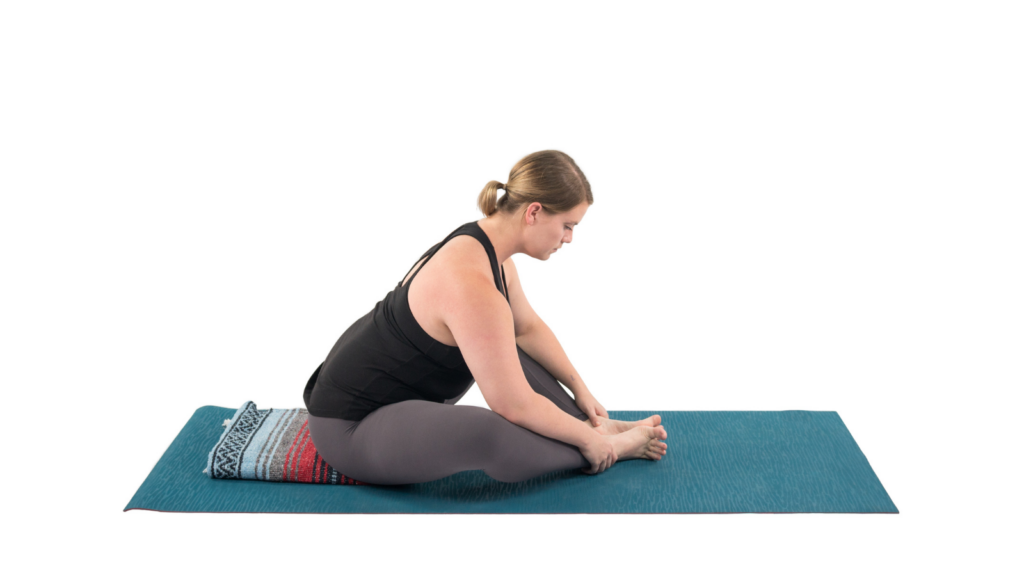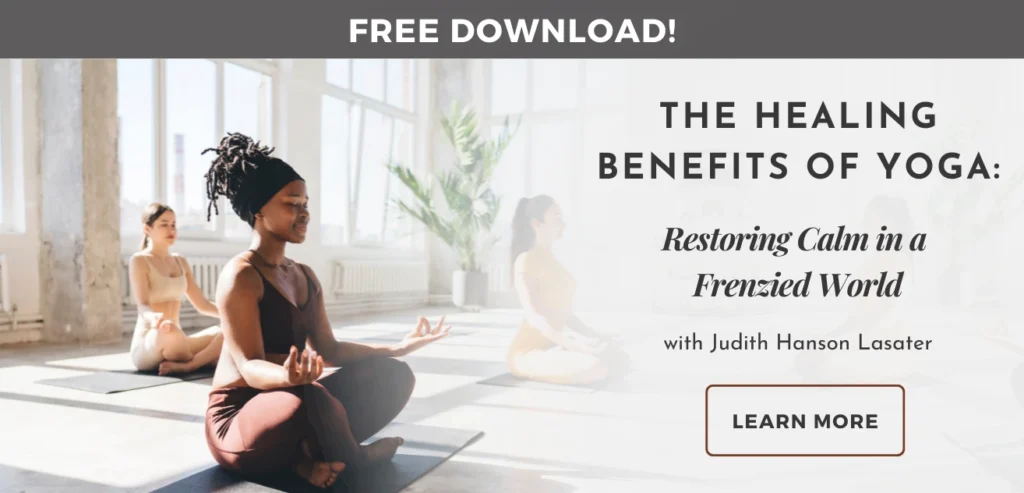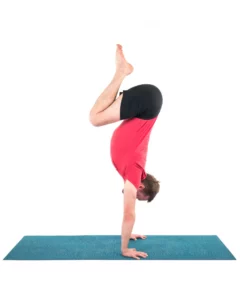Yoga Pose Primer: 7 Steps for Practicing Bound Angle Pose (Baddha Konasana)

During grade school, my sisters and I took ballet classes. We studied at the Cincinnati Conservatory with a lovely young dancer named Donna Ficker. A year or two into our lessons, we had to find a new teacher when Donna’s mother moved the family to New York, where her younger sister Suzi changed her name to Suzanne Farrell and joined George Balanchine in the New York City Ballet. I particularly remember watching Suzi practice at the studio amid excited murmurs about her already burgeoning career.
During our brief ballet career, my dad, a gymnast with an eye for form, installed a barre in our basement and led us through our ballet warm-ups every morning. None of us was star material, but I thought the whole thing was pretty fun—the jumping around, the costumes, and even the warm-ups. I haven’t performed a plié in many years, but one of the exercises we practiced every day remained in my repertoire long after ballet lessons ended and before I discovered yoga in 1982: Butterfly, aka Baddha Konasana.
Baddha Konasana (Bound Angle Pose) was the one ballet/yoga position I’ve practiced almost daily since grade school. Here are some of my Bound Angle Pose tips.
With ballet’s huge emphasis on turnout, Butterfly is one of its important warm-up exercises. More than anything, Baddha Konasana requires and develops outward rotation of the hip joints—that is if the hip joints are shaped so that outward rotation is even possible. The pose develops outward rotation by stretching the adductors (the muscles that draw the leg in toward the center) in the groin and inner thigh. In yoga, Butterfly is touted for its internal benefits: it stimulates the abdominal organs, improves circulation, soothes menstrual discomfort and sciatica, and helps relieve menopause symptoms.
Practicing Baddha Konasana: Bound Angle Pose tips

- Have a few blankets handy. Sit on a folded blanket. Sitting on a blanket instead of a mat cushions your anklebones.
- Bend both knees and place the soles of your feet together, allowing the legs to release out to the sides.
- Reach back and check your lumbar spine by placing a few fingers on the spine. If your vertebrae are poking out in your low back, this means that your back is rounded (in flexion). Fold your blanket and sit on it with your pelvis on the blanket and feet on the floor. Check your spine again. If your vertebrae are still poking out, you might want to try sitting up even a little higher.
- Depending on flexibility, you may not be able to sit up high enough for your spine to draw into your back. If this is the case, place your hands behind you and use your arms to help you sit up straight. I recommend not bending forward if your vertebrae are poking out in your back, as this can stress the discs at the base of your spine.
- Another possible restriction you might encounter is discomfort in one or both of your knees. If this is the case, you can elevate your leg(s) by placing a folded blanket or yoga blocks under your thigh(s).
- You may, on the other hand, find that your legs release easily, and your spine dips into your lower back. If that is the case, you can practice Baddha Konasana sitting upright or bending forward, as always, beginning by tipping your pelvis forward.
- Whichever variation you choose, take 5 to 10 breaths in the pose, creating space in your body as you inhale and soften into that space on the exhale.
Bound Angle Pose Refinements

There’s a common misunderstanding that Baddha Konasana is about pushing your legs down to the floor. I cringe when I remember zealous teachers 20 years ago pushing or even standing on my thighs to drive them to the floor. Fortunately, my body could take the abuse back then, and I didn’t know better. Others have not been so lucky. One friend was laid up for three weeks with a snapped tendon after a teacher tried to force her legs down to the floor. So, if you’re a teacher, please don’t do this! This is one of my most important Bound Angle Pose tips.
If you push down even lightly on your thighs, you may notice that your pelvis tilts back, pushing your lumbar spine into flexion, which is not a healthy action for your back in this pose. Instead, think about the thighs lengthening outward from your pelvis. Whether your knees are millimeters from the floor or a foot above, this is true.
Speaking of which, if your knees have been way up off the floor for years in Baddha Konasana and have barely budged, it’s likely not an issue of flexibility. No two hip joints are alike. Some of our hip joints are oriented such that external rotation is really easy. Others are formed to favor internal rotation. Occasionally, someone’s hip joints accommodate both actions, but most of the time, if we rotate easily in one direction, we probably won’t rotate so easily the other way. You may be part of the inward rotation camp.
So, as with all yoga asanas, please let go of the idea that your knees being high in the air in Bound Angle Pose makes you a bad yogi. It often doesn’t even mean anything about your flexibility, let alone your strength of character. It’s all about how your hip joints are formed, and “normal” and “healthy” look different for different people.
Unlike ballet, yoga is not about performance. Like other yoga asanas, Baddha Konasana can be beneficial no matter what your pose looks like. After you spend a few breaths in the pose, stretch your legs out in front of you and feel how your body has changed. It is these moments, when we pause to let a pose integrate into our bodies and give our minds a chance to absorb what we feel, that truly define yoga practice.
Another Yoga Pose Primer from special contributor Charlotte Bell – Dekasana (Airplane Pose).
Study with Leslie Howard and YogaUOnline – Surprising Truths about Pelvic Floor Disorders – And How Yoga Can Help.
Reprinted with permission from Hugger Mugger Yoga Products Blog
Also, read...
Which Is the Best Way to Come Into Triangle Pose?
Cat-Cow Pose (Marjaryasana-Bitilasana)
2 Restorative Yoga Poses to Calm Your Body and Mind
Related courses

Charlotte Bell began practicing yoga in 1982 and began teaching in 1986. She was certified by B.K.S. Iyengar in 1989 following a trip to Pune. In 1986, she began practicing Insight Meditation with her mentors Pujari and Abhilasha Keays. Her asana classes blend mindfulness with physical movement. Charlotte writes a column for Catalyst Magazine and serves as editor for Yoga U Online. She is the author of two books: Mindful Yoga, Mindful Life, and Yoga for Meditators, both published by Rodmell Press. She also edits Hugger Mugger Yoga Products’ blog and is a founding board member for GreenTREE Yoga, a non-profit that brings yoga to underserved populations. A lifelong musician, she plays oboe and English horn in the Salt Lake Symphony and the folk sextet Red Rock Rondo whose 2010 PBS music special won two Emmys.



